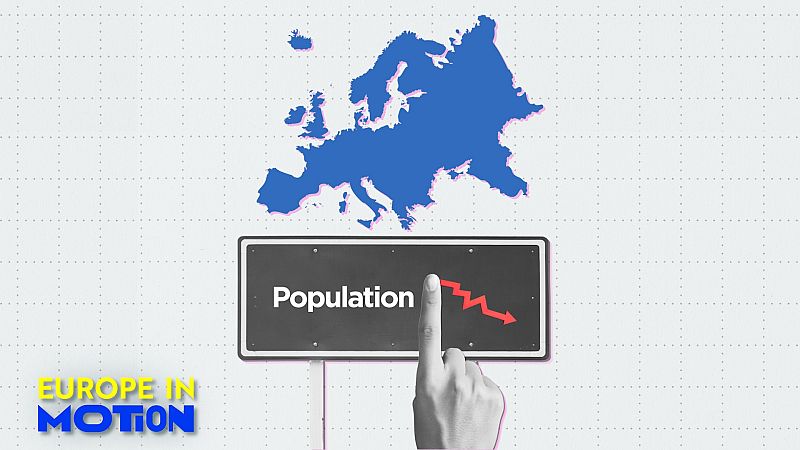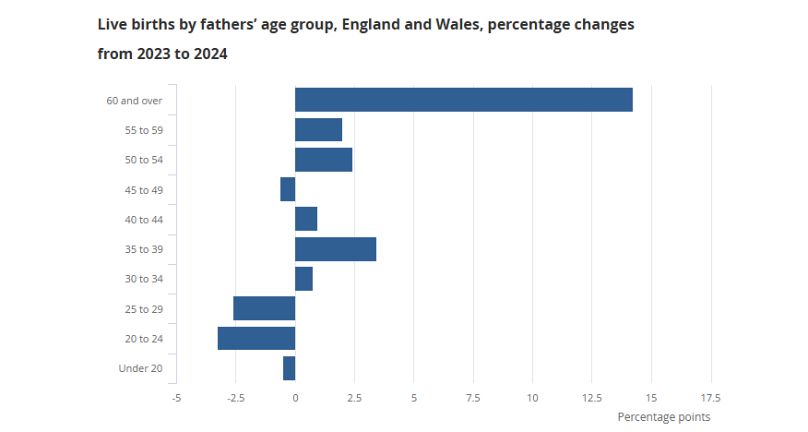The most recent information regarding fertility throughout the continent is scarcely different from catastrophic.
In 2024, numerous European nations are documenting their lowest birth rates in many decades, or possibly in history.
While experts say 2.1 children per woman are required to maintain a stable population, yet several countries have rates consistently below 1.5.
Germany: ‘Migration is the only reason for population growth’
Germany’s birth rate fell to 1.35, the lowest since 1994 (1.24), following a period of economic downturn.
The nation’s Federal Statistical Office (Statistisches Bundesamt) explicitly mentions that “net immigration was the only factor responsible for population growth.”
However, even with the addition of migrants, the population increased by just 0.1% or 121,000 individuals during the previous year. In truth, “more people passed away than were born,”says the institute.
Data also reveals a significant gap among German states. Although the population in wealthier regions, such as Bavaria or Hamburg, experienced an increase in prosperity, the most substantial declines were observed in the less affluent areas of Thuringia, Saxony, and Saxony-Anhalt.
In nearby Austria, the situation was even more alarming in 2024, as the nation reported the lowest birth rate ever recorded: 1.32 or 77,238 new births, representing a 0.5% decrease, as perStatistik Austria.
Italy: Speeding towards transforming into a human desert
Over 166,000 new arrivals contributed to slowing Italy’s population decline due to migration, yet it wasn’t sufficient to stop the reduction.
The nation’s population has consistently dropped below 60 million, after several years of decrease.
The fertility rate in 2024 reached a historic low (1.18), according toISTATOut of every 1,000 individuals, six newborns were born, whereas 11 passed away.
To make things worse, the number of Italians who emigrated (156,000) was three times greater than those whoreturned (53,000).
The most significant declines in population were noted in the less affluent inland regions of the southern area.
France: ‘Lowest number of births since the conclusion of World War I’
In France, which has historically been one of Europe’s most productive countries, the figures are also declining rapidly.
Its birth rate in 2024, at 1.62, was the lowest since the end of World War I, according to theINSEE.
Over the last 15 years, the nation’s fertility rate has decreased by 20%, barely sufficient to maintain a minimal positive balance between births and deaths (+17,000), the smallest such margin since the conclusion of World War II.
The sole positive development was life expectancy. It has recently climbed to 85.6 years for females and 80 years for males, setting a new historical milestone.
England: Senior mothers create barriers against population decline
England and Wales stand out as one of the rare exceptions in Europe.
This is due to an unexpected increase in the number of babies born to fathers aged over 60 (+14%), which contributed to the first rise in birth numbers in England and Wales since 2021 (+0.6%).
On the opposite, pregnancies among young mothers and fathers decreased, according to theINS.
The percentage of children with parents from abroad was notably high: 40% in England and almost 20% in Wales, reflecting a sharp rise of 34% from 2023 to 2024.
Spain is an additional exception. According to INEAccording to preliminary figures, the birth rate in 2024 may increase by 0.4%, with an estimated 322,034 newborns.
Similar to other nations, Spain has experienced a decrease in birth rates alongside an increase in the average age of mothers. Over the past decade, the number of women aged 40 and older who became mothers increased by 8.5%.
Nordics: Finland records the lowest rate since 1776 (yes, 1776)
Finland’s birth rate fell to 1.25 in 2024, according toStatistics Finland. That is the highest rate recorded since data collection started in the late 19th century, when the region was still under Swedish control, a country also experiencing population challenges.
The figure provided by Stockholm for the previous year is 1.43, which is just a bit higher than most nations, but still represents the country’s lowest level of fertility ever, according toSCB.
The total number of new children was 98,500, marking the lowest level in 23 years, with the population declining in 169 out of the nation’s 290 municipalities.
Hungary and Poland: The Collapse of Family-Friendly Policies?
Although new policies have been introduced to encourage higher birth rates, Hungary and Poland remain among the countries with low fertility rates in 2024.
The figures released by Warsaw are especiallybrutal, with a 1.1 fertility rate, indicating the number of new children has nearly halved since 1990 (1.9).
Women, on average, are now becoming mothers at the age of 29, which is significantly later compared to 35 years ago, when the typical age was just below 23.
Hungary is no different, with 77,500 new births last year, the smallest number recorded, along with a 1.38 birth rate, the lowest since 2014, as reported by Hungary’sKLS.








